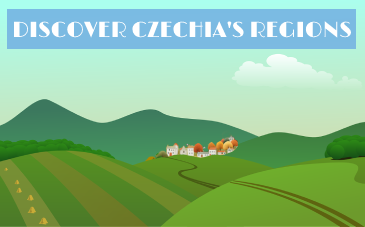Authorities calling for heightened responsibility as fears of foot-and-mouth mount
The Czech authorities are introducing broad new measures to try to prevent the spread of foot-and-mouth disease to this country after the latest outbreak was detected in Slovakia at a farm just 40 km from the Czech border. Animal farms and zoos in Moravia have closed their doors to visitors and strict border controls will be complemented by tests on milk and wild animals.
The Czech veterinary authorities are on high alert as the highly contagious foot-and-mouth disease which has not been seen in the country for half a century has come dangerously close to the country’s eastern border. In addition to a ban on the transport of live animals from Slovakia and Hungary, where the disease is present, the Czech State Veterinary Administration has banned imports of meat, bone meal and processed animal protein and fats from the two countries. The ban on live animals and animal products also applies to Burgenland and Upper Austria which are considered high risk due to their location.
Checks on large vehicles transporting goods can only pass through seven border crossings on the Czech-Slovak and Czech-Austrian border where veterinary officials are on duty 24/7. As of Tuesday preventive PCR tests on milk will be carried out at farms with more than 100 dairy cows in southern Moravia and all farms regardless of size in the Břeclav and Hodonín districts which are considered to be most at risk. PCR tests on milk can identify the virus several days before the first symptoms appear in animals, giving the authorities time to act and isolate any outbreaks as soon as possible.
The State Veterinary Administration has also banned visits to sheep, goat, cattle and pig farms by workers who trim the animals' hooves and shear their wool because they pose a high risk of spreading the disease. Experts say the shortest incubation period for cows is two to four days, which means that a cow or pig can transmit the disease to other animals for several days before they show symptoms and action is taken. By that time an employee or visitor could have already carried the virus out of the grounds – on their boots, clothes or car tires.
Zoos in Moravia have closed their doors to visitors to protect their animals and species in the wild will also be tested at random in the coming days. There are fears that the disease could be transmitted by birds. People have been urged not to come close to farming cooperatives, enter pastures or travel to the areas in neighbouring Slovakia where the disease is present.
Experts fear that the biggest likelihood of spreading the disease to this country is by individuals. Agriculture Minister Marek Výborný appealed for heightened responsibility.
“Easter is around the corner and we know that many people buy and transport lambs and baby goats from Slovakia for the Easter celebrations. I urge everyone to refrain from taking such a risk, which would come at an extremely high price for the entire country. Although it may not seem that way, the risk of a transfer of the virus is very high and the cost would be enormous for us all.”
There is no cure for the highly contagious disease and the only way of dealing with it is to cull all the animals affected. One of the biggest tragedies during the last epidemic in 1975 was that in a panic that the disease had hit the Dvůr Kralové Zoo, the authorities ordered the extermination of the entire herd of close to 50 giraffes –the largest herd of giraffes in captivity at the time. The decision was premature and the communist authorities kept it secret even from allied states.







